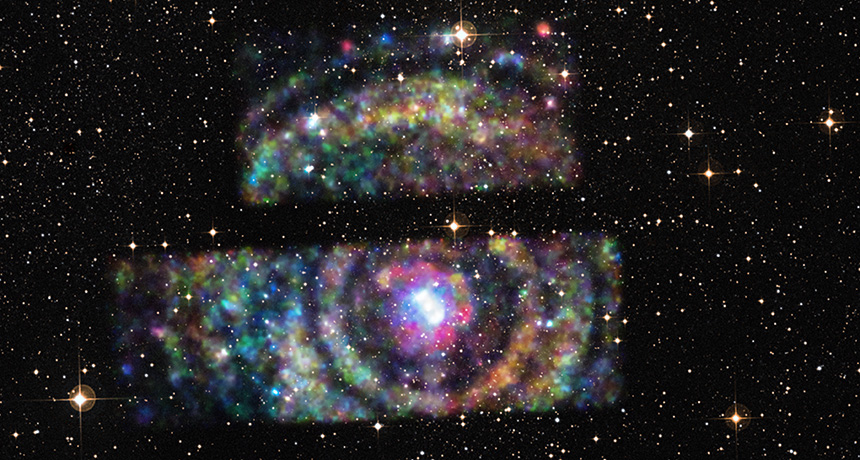X-ray rings reveal neutron star’s distance
Dust cloud reflections plus trigonometry puts Circinus X-1 at 31,000 light-years away

BULL’S-EYE A blast of X-rays from a neutron star (center) illuminate dust clouds between the star and Earth (colored rings), as seen in this composite image. Red, green and blue correspond to low-, medium- and high-energy X-rays.
S. Heinz et al/U. of Wisconsin–Madison/CXC/NASA (X-ray); DSS (optical)







